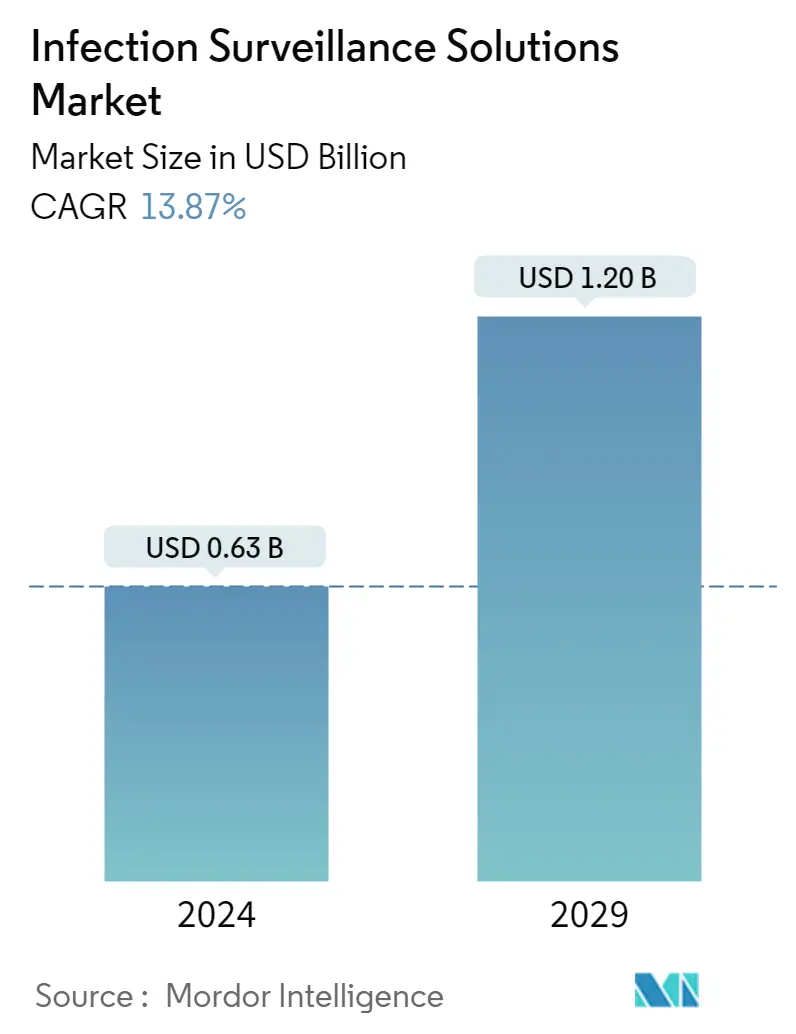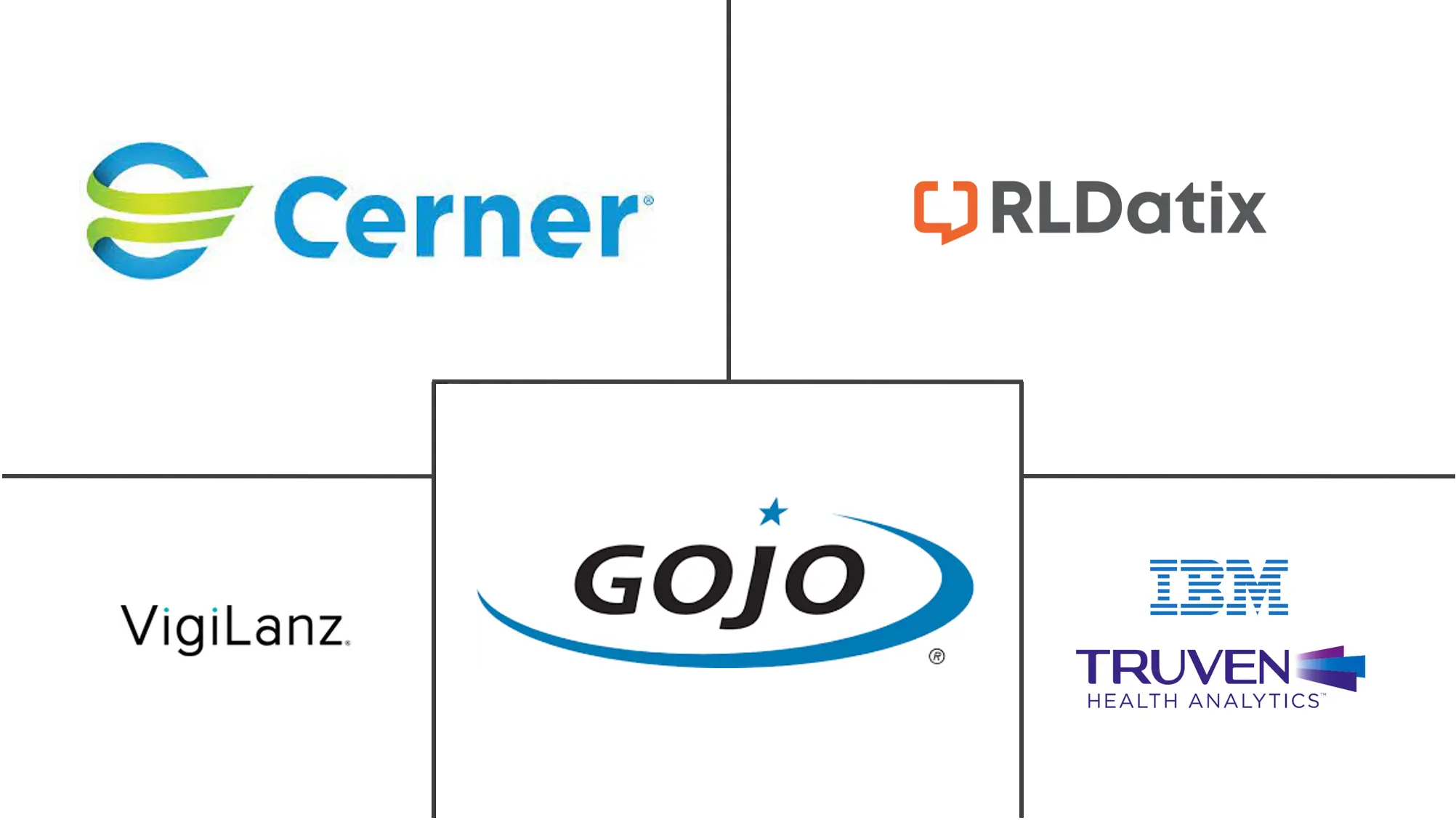Market Size of Infection Surveillance Solutions Industry

| Study Period | 2019 - 2029 |
| Market Size (2024) | USD 0.63 Billion |
| Market Size (2029) | USD 1.20 Billion |
| CAGR (2024 - 2029) | 13.87 % |
| Fastest Growing Market | Asia Pacific |
| Largest Market | North America |
Major Players
*Disclaimer: Major Players sorted in no particular order |
Need a report that reflects how COVID-19 has impacted this market and its growth?
Infection Surveillance Solutions Market Analysis
The Infection Surveillance Solutions Market size is estimated at USD 0.63 billion in 2024, and is expected to reach USD 1.20 billion by 2029, growing at a CAGR of 13.87% during the forecast period (2024-2029).
- Stringent government policies for preventing hospital-associated infections are aiding in developing analytical and infection surveillance solutions for application in the healthcare industry. Hospital-acquired infections are a major cause of mortality and morbidity and provide a challenge to clinicians.
- The US Department of Health and Human Services released the 'National Action Plan to Prevent Health Care-Associated Infections: Road Map to Elimination (HAI Action Plan),' outlining specific five-year goals for the prevention of healthcare-associated infections. Additionally, the World Health Organization (WHO) developed a protocol for implementing the Surgical Unit-based Safety Programme in African hospitals.
- Moreover, the rise in the number of surgeries is also one of the drivers of the market, as with surgery, surgical site infections (SSIs) represent a substantial clinical and economic burden on patients and the healthcare system. The prevention of SSIs entails surveillance activities. According to the Lancet Commission for Global Surgery (LCoGS), 11% of the global burden of the disease requires surgical care, anesthesia management, or both. Some studies have estimated this burden to be as high as 30%. The LCoGS estimated that 5,000 surgeries are required to meet the surgical burden of disease for 100,000 people in LMICs (low-to-middle-income countries).
- Surgical site infections are not just a problem for poor countries; in the United States, they contribute to patients spending more than 400,000 extra days in hospital at the cost of an additional USD 10 billion per year (source: WHO).
- However, Healthcare providers are often reluctant to engage with technology, partly due to the scale and pace of changes and partly through lack of education and training and concerns over liability and funding.
- Moreover, many healthcare facilities are required by regulatory bodies to have infection surveillance solutions in place. For instance, the International Health Regulations (2005) (IHR 2005) require countries to designate a National IHR Focal Point for communications with WHO to establish and maintain core capacities for surveillance and response, including at designated points of entry.
